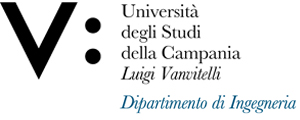Luca ESPOSITO
Insegnamento di LABORATORIO NUMERICO DELLE STRUTTURE - ELEMENTI FINITI
Corso di laurea magistrale in INGEGNERIA CIVILE
SSD: ICAR/08
CFU: 9,00
ORE PER UNITÀ DIDATTICA: 72,00
Periodo di Erogazione: Secondo Semestre
Italiano
| Lingua di insegnamento | italiano |
| Contenuti | Richiami sulle equazioni di equilibrio e sui principali modelli cinematici del continuo, legame costitutivo in materiali elastici lineari; problema variazionale e forma discreta dell’equazioni differenziali alle derivate parziali (PDE) in elasticità; metodo di Ritz-Galerkin; analisi matriciale di strutture reticolari; l’approccio agli spostamenti; formulazione del problema di minima energia potenziale nel Metodo degli Elementi Finiti; analisi elastica; elementi di ordine elevato ed isoparametrici; non linearità del materiale; applicazioni con l’ausilio di codici FEM a sistemi mono, bi- e tri-dimensionali ed, in particolare, simulazioni numeriche in ambiente ANSYS- Multiphisics: 1) fase di pre-processing: modellazione geometrica del problema; impostazione delle caratteristiche costitutive dei materiali; scelta dell’elemento finito e discretizzazione del modello (mesh); impostazioni delle condizioni iniziali ed al contorno; 2) fase di solution: scelta del solutore; 3) fase di post-processing: analisi dei risultati. Approfondimento del linguaggio di programmazione Ansys Parametric Design Language (APDL) per l’utilizzo della modalità batch in ambiente ANSYS- Multiphisics. |
| Testi di riferimento | Villaggio P. Mathematical models for elastic structures. Cambridge University Press. 2005. |
| Obiettivi formativi | Il corso mira a fornire agli studenti gli strumenti essenziali per la modellazione e l’analisi computazionale in ambito termo-meccanico di continui e strutture, prestando particolare attenzione alle applicazioni di specifico interesse per la Scienza delle Costruzioni. |
| Prerequisiti | nessuno |
| Metodologie didattiche | Lezioni. Esercitazioni di simulazione numerica |
| Metodi di valutazione | Colloquio orale. Realizzazione di un elaborato con l’ausilio di un programma di calcolo numerico su un problema strutturale in ambito termo-meccanico. |
| Altre informazioni | nessuna |
| Programma del corso | Richiami sulle equazioni di equilibrio e sui principali modelli cinematici del continuo, legame costitutivo in materiali elastici lineari; problema variazionale e forma discreta dell’equazioni differenziali alle derivate parziali (PDE) in elasticità; metodo di Ritz-Galerkin; analisi matriciale di strutture reticolari; l’approccio agli spostamenti; formulazione del problema di minima energia potenziale nel Metodo degli Elementi Finiti; analisi elastica; elementi di ordine elevato ed isoparametrici; non linearità del materiale; applicazioni con l’ausilio di codici FEM a sistemi mono, bi- e tri-dimensionali ed, in particolare, simulazioni numeriche in ambiente ANSYS- Multiphisics: 1) fase di pre-processing: modellazione geometrica del problema; impostazione delle caratteristiche costitutive dei materiali; scelta dell’elemento finito e discretizzazione del modello (mesh); impostazioni delle condizioni iniziali ed al contorno; 2) fase di solution: scelta del solutore; 3) fase di post-processing: analisi dei risultati. Approfondimento del linguaggio di programmazione Ansys Parametric Design Language (APDL) per l’utilizzo della modalità batch in ambiente ANSYS- Multiphisics. |
English
| Teaching language | Italian |
| Contents | Review of equilibrium equations and main kinematic models of the continuum, constitutive bond in linear elastic materials; variational problem and discrete form of partial differential equations (PDE) in elasticity; Ritz-Galerkin method; matrix analysis of reticular structures; the approach to travel; formulation of the minimum potential energy problem in the Finite Element Method; elastic analysis; high order and isoparametric elements; non-linearity of the material; applications with the aid of FEM codes to single, two- and three-dimensional systems and, in particular, numerical simulations in the ANSYS-Multiphisics environment: 1) pre-processing phase: geometric modeling of the problem; setting of the constitutive characteristics of the materials; choice of the finite element and discretization of the model (mesh); initial and boundary conditions settings; 2) solution phase: choice of the solver; 3) post-processing phase: analysis of the results. In-depth study of the Ansys Parametric Design Language (APDL) programming language for the use of batch mode in the ANSYS-Multiphisics environment. |
| Textbook and course materials | Villaggio P. Mathematical models for elastic structures. Cambridge University Press. 2005. |
| Course objectives | The course aims to provide students with the essential tools for modeling and computational analysis in the thermo-mechanical field of continuum and structures, paying particular attention to applications of specific interest for Structural Mechanics. |
| Prerequisites | None |
| Teaching methods | Front lessons, class exercitations on numerical simulations |
| Evaluation methods | Oral examination, presentation of one application of numerical calculation on a structural case study and discussion. |
| Course Syllabus | Review of equilibrium equations and main kinematic models of the continuum, constitutive bond in linear elastic materials; variational problem and discrete form of partial differential equations (PDE) in elasticity; Ritz-Galerkin method; matrix analysis of reticular structures; the approach to travel; formulation of the minimum potential energy problem in the Finite Element Method; elastic analysis; high order and isoparametric elements; non-linearity of the material; applications with the aid of FEM codes to single, two- and three-dimensional systems and, in particular, numerical simulations in the ANSYS-Multiphisics environment: 1) pre-processing phase: geometric modeling of the problem; setting of the constitutive characteristics of the materials; choice of the finite element and discretization of the model (mesh); initial and boundary conditions settings; 2) solution phase: choice of the solver; 3) post-processing phase: analysis of the results. In-depth study of the Ansys Parametric Design Language (APDL) programming language for the use of batch mode in the ANSYS-Multiphisics environment. |








